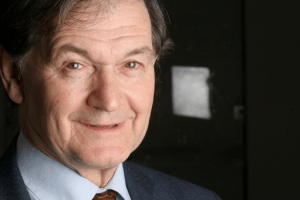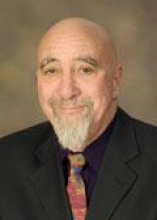Human Consciousness May Not Be Computable
One model of consciousness would mean that conscious computers are a physical impossibility
Sir Roger Penrose(b. 1931)
Is there a materialist explanation for those areas in which humans display powers that computers seemingly cannot imitate (sometimes called “human exceptionality”)?
Yes. But it is highly speculative.
The gifted mathematical physicist Sir Roger Penrose believes that computers will never be creative.1 So does Gregory Chirikjian, Director of the Johns Hopkins Whiting School’s Robot Laboratory:
Nor will robots be able to exhibit any form of creativity or sentience.2
The current President of Microsoft, Satya Nadella, agrees:
One of the most coveted human skill is creativity, and this won’t change. Machines will enrich and augment our creativity, but the human drive to create will remain central.3
Why are they so sure? Various public figures, including astronomer Sir Martin Rees, robotics entrepreneur Elon Musk, presidential adviser Henry Kissinger, and astrophysicist Stephen Hawking have all predicted that thinking computers that will run the world and/or run humanity out of it. Are there issues that Chirikjian and Nadella, who work in the field, are taking into account that the others are not?
One issue to be aware of is this: AI is performed by computers and computers are entirely algorithmic. That is to say, they are constrained to obey a set of operations written by a computer programmer. Mathematics is algorithmically constructed, based on logic and foundational axioms. And physics is built algorithmically on foundational laws. In this sense, common naturalistic phenomena are largely algorithmic. They operate according to the logic of mathematics and the laws of physics.
Penrose wondered, is anything in nature nonalgorithmic? He points to the collapse of a quantum mechanical wave function into a deterministic state. Such quantum effects can be found in the microtubules found in the brain. Penrose and Stuart Hameroff, M.D., propose4 a quantum mechanical model5 of consciousness involving the microtubules which, Hameroff notes, is “is in conflict with a major premise of [strong] AI and [Ray Kurzweil’s] Singularity.”6
Hameroff is referring to Google Director of Engineering Ray Kurzweil’s prediction that AI will be as intelligent as a human being by 2029 and that we will merge with AI by 2045 (that’s The Singularity). But computers are limited to executing algorithms and the theory that he and Penrose propose is non-algorithmic. Non-algorithmic means, by definition, non-computable. In other words, what Penrose and Hameroff are proposing cannot be simulated on a computer. If the Penrose-Hameroff theory or any similar theory proves to be a working model of consciousness, one implication is that we cannot generate machines that do what the brain does. In that case, the technology that thinks like a conscious human being, if developed, will not be a computer. We would need to give it another name.
If we can build a human-like brain, be afraid, be very afraid. Skynet might be right around the corner. So far, all we have is a controversial, largely unexplored conjecture.
As long as computers simply get faster and use more memory, there is no reason to worry about a self-aware Skynet.
Notes
1. We define creativity in the sense of the Lovelace Test: See Bringsjord, Selmer, Paul Bello, and David Ferrucci. “Creativity, the Turing Test, and the (better) Lovelace test,” Minds and Machines 11:3-27, 2001. Also see Robert J. Marks II, “The Turing Test Is Dead. Long Live the Lovelace Test,” Evolution News and Views, July 3, 2014
2. Gregory Chirikjian, “Help Wanted for the Cognitive Era,” JHU Robotics Center, Summer 2017, p.44
3. Satya Nadella, Hit Refresh: The Quest to Rediscover Microsoft’s Soul and Imagine a Better Future for Everyone, Harper Business (2017)
4. Hameroff, Stuart, and Roger Penrose. Consciousness in the universe: A review of the ‘Orch OR’theory.Physics of life reviews 11, no. 1 (2014): 39-78.
5. Penrose and Hameroff are not proposing that the brain works like a quantum computer. Quantum computers are still constrained by the Church-Turing Thesis which says that anything that can be done today on a supercomputer can be done on Turing’s original universal machine where the operation would occur trillions of times more slowly.
6. Alex Tsakiris, 133: Dr. Stuart Hameroff On Quantum Consciousness and Moving Singularity Goal Posts, Skeptiko (undated)
 Robert J. Marks II, Ph.D., is Distinguished Professor of Engineering in the Department of Electrical & Computer Engineering at Baylor University. Marks is the founding Director of the Walter Bradley Center for Natural & Artificial Intelligence and hosts the podcast Mind Matters. He is the Editor-in-Chief of BIO-Complexity and the former Editor-in-Chief of the IEEE Transactions on Neural Networks. He served as the first President of the IEEE Neural Networks Council, now the IEEE Computational Intelligence Society. He is a Fellow of the IEEE and a Fellow of the Optical Society of America. His latest book is Introduction to Evolutionary Informatics coauthored with William Dembski and Winston Ewert. A Christian, Marks served for 17 years as the faculty advisor for CRU at the University of Washington and currently is a faculty advisor at Baylor University for the student groups the American Scientific Affiliation and Oso Logos, a Christian apologetics group.
Robert J. Marks II, Ph.D., is Distinguished Professor of Engineering in the Department of Electrical & Computer Engineering at Baylor University. Marks is the founding Director of the Walter Bradley Center for Natural & Artificial Intelligence and hosts the podcast Mind Matters. He is the Editor-in-Chief of BIO-Complexity and the former Editor-in-Chief of the IEEE Transactions on Neural Networks. He served as the first President of the IEEE Neural Networks Council, now the IEEE Computational Intelligence Society. He is a Fellow of the IEEE and a Fellow of the Optical Society of America. His latest book is Introduction to Evolutionary Informatics coauthored with William Dembski and Winston Ewert. A Christian, Marks served for 17 years as the faculty advisor for CRU at the University of Washington and currently is a faculty advisor at Baylor University for the student groups the American Scientific Affiliation and Oso Logos, a Christian apologetics group.
Also: by Robert Marks: Could Hal 9000 ever be built?
Screenwriters’ jobs are not threatened by AI Unless the public starts preferring mishmash to creativity
and
AI that can read minds? Deconstructing AI hype

